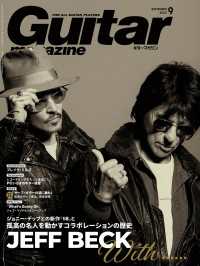- ホーム
- > 洋書
- > ドイツ書
- > Humanities, Arts & Music
- > Music
- > musical equipment
Description
(Text)
Schubert erhielt die Anregung zur Komposition der Sonate in a-moll wahrscheinlich von Vinzenz Schuster. Jedenfalls brachte dieser Wiener Musiker das Werk 1824 zur Uraufführung. Und ein Jahr später zeichnete derselbe als Autor einer "Anleitung zur Erlernung des von Hrn. Georg Staufer neu erfundenen Gitarre-Violoncells".Dieses Instrument, das wie das Cello zwischen den Knien gehalten und mit dem Bogen gespielt wird, am Griffbrett jedoch wie die Gitarre mit Bünden versehen ist, wurde merkwürdigerweise von Schubert - und offenbar nur von ihm - "Arpeggione" genannt. So kam es, dass dieser Name bekannt blieb, während das von ihm bezeichnete Instrument kurz nach seiner Erfindung wieder in Vergessenheit geriet.Schon die erste Ausgabe war versehen mit für Violine und Cello eingerichteten Stimmen. Bratschisten nahmen sich des Werkes ebenfalls an. Mit der zunehmenden ausdrucksmäßigen Differenzierung des Flötenspiels auf dem modernen Instrument eröffnete sich auch dem Flötisten in der "Arpeggione-Sonate" eine willkommene und anspruchsvolle Möglichkeit zur Erweiterung des Repertoires. Hierzu möchte diese Ausgabe eine Hilfeleistung bieten.Der hier vorliegenden Ausgabe ist ein Revisionsbericht beigefügt (Flötenstimme Seite 2 "Zur Edition und Bearbeitung").Peter-Lukas GrafSchwierigkeitsgrad: 4
(Table of content)
Allegro moderato - Adagio - Allegretto
(Text)
It was probably Vinzenz Schuster, who inspired Schubert to compose the sonata in a-minor. Anyhow, it was this viennese musician, who premiöred this opus in 1824. And one year later, the latter was the author of an "Instruction to Learn the Guitar-Violoncello newly invented by Mr. Georg Staufer".This Instrument is held between the knees like the cello and is also played with a bow, however, on the fingerboard it is provided with frets like the guitar. Strangely enough, Schubert, and abviously only he, called it "Arpeggione". This is the reason why the name remained well-known while the Instrument, which it denoted, was forgotten soon after its invention.Already the first edition was equipped with parts for violin and cello. Viola-players also took up the opus. With increasing expressional differentiation of flute-playing on the modern Instrument, the flutists discovered a welcome and ambitious possibility to enlarge their repertoire by the "Arpeggione Sonata". This edition would like to offer assistance here.To this edition we have enclosed a revisions report (flute part page 2 "Annotations to Edition and Arrangement").Instrumentation:flute and piano
-

- 電子書籍
- 異世界の神魂戦士【タテヨミ】第343話…
-

- 電子書籍
- エスティ はじまりの魔法を継ぐ者【タテ…
-

- 洋書
- Reputation
-

- 電子書籍
- ギター・マガジン 2022年9月号
-

- 電子書籍
- カワイイなんて聞いてない!!(2)



